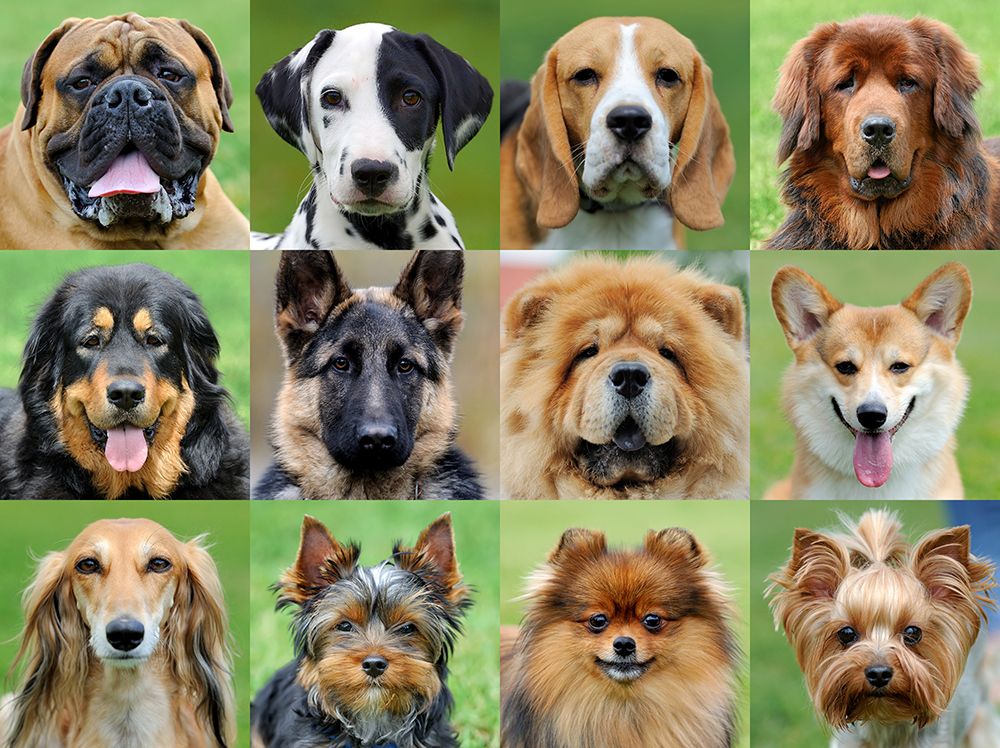
Dogs have long held a special place in our hearts, earning the beloved title of “man’s best friend.” From ancient times, humans have skillfully shaped canine evolution, breeding dogs to perform a myriad of tasks, be it hunting, guarding, or herding. This purposeful breeding has led to the incredible diversity we see today, with over 340 known dog breeds across the globe, each meticulously developed with distinct physical and mental traits.
Yet, for all their loyalty and companionship, not all dogs are viewed equally in every corner of the world. In a surprising twist for many dog lovers, certain breeds are subject to outright bans or severe restrictions in various countries. These regulations typically stem from concerns over aggressive nature or a history of incidents, making it challenging, if not impossible, to own these particular canines in many places.
This article embarks on an insightful journey, not to cast judgment on these remarkable animals, but to understand the complex reasons behind these global blacklists. We’ll meet some of the breeds that, despite their inherent loyalty and potential for good, have found themselves on the wrong side of the law in numerous nations. Prepare to have your curiosity piqued as we delve into the stories of these regulated dogs and the legislation that governs their existence.
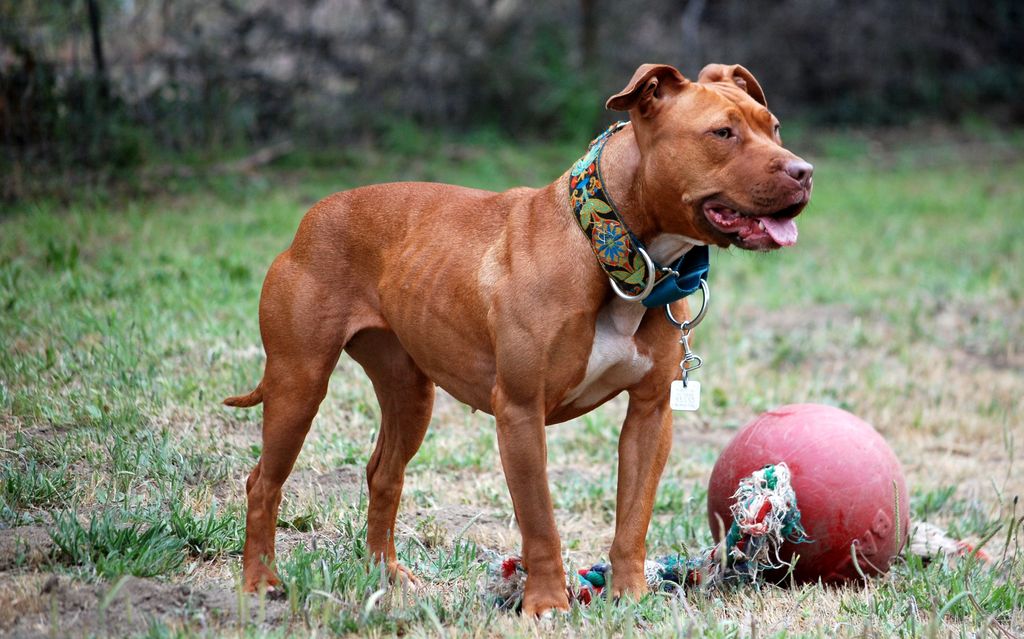
1. **Pit Bull Terrier**: When you hear about banned dog breeds, the Pit Bull Terrier often comes to mind first, and for good reason. This breed is one of the most widely recognized on breed-specific legislation lists across the globe, facing strict bans or heavy restrictions in countries like the United Kingdom, Australia, and New Zealand. These laws are typically rooted in concerns about their formidable strength and a documented history of involvement in aggressive incidents, particularly when they are in unregulated environments. The breed’s powerful muscular build and determined nature often make them a target for these types of regulations, sometimes overshadowing the intentions of responsible owners.
Originating in the UK, American Pit Bull Terriers are the result of breeding Old English Terriers and Old English Bulldogs—two breeds that are now extinct. From their arrival in the US in the 19th century, they became known for their gameness, athleticism, and strength, traits inherited from their ancestors. While many advocates passionately argue that responsible ownership makes an enormous difference in a pit bull’s temperament, the breed’s overall reputation frequently outweighs the individual dog’s behavior in the eyes of lawmakers. This leads to blanket prohibitions that don’t differentiate between well-socialized pets and those with problematic histories. Only some American Pit Bull Terriers are harmful, but their overly enthusiastic temperament and powerful body can cause trouble.
Read more about: Finding Your Perfect First Furry Friend: 14 Adaptable Dog Breeds for New Pet Parents
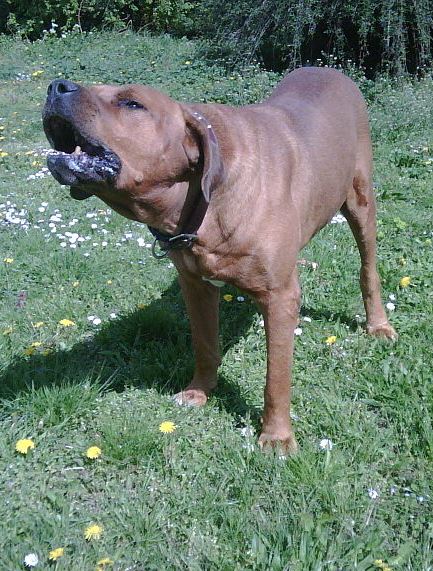
2. **Japanese Tosa**: The Japanese Tosa is a truly formidable presence, a large and powerful breed that was originally developed for dog fighting in Japan. In some regions of its home country, this practice astonishingly remains legal. However, on the international stage, the Tosa faces a very different reality; countries such as Norway, Iceland, and Denmark have made the breed illegal due to its strong association with aggression and its undeniably intimidating physical presence. These impressive dogs can weigh over 130 pounds and were specifically bred to be silent, calm, and focused during combat, a trait that makes their potential aggression even more unsettling.
The Japanese Tosa originated from the Tosa Region in Japan about 150 years ago, when local breeders sought to create a sumo-type wrestler breed for fights. To achieve this, they meticulously crossed large breeds like Mastiffs, Great Danes, Bull Terriers, and St. Bernards. The unique rules of dogfighting in Japan dictated that the dog should not make any noise while fighting, which explains the Tosa’s quiet demeanor, even amidst its fearless and courageous nature. Despite efforts by modern breeders to emphasize a more stable temperament, the Tosa’s legacy as a fighting dog has made it incredibly difficult for the breed to gain acceptance internationally.
In many places, owning a Japanese Tosa isn’t just a matter of walking into a pet store; it often requires stringent permits, significant liability insurance, or, as mentioned, is met with outright bans due to the perceived risk they pose. While rare incidents of these dogs being aggressive or violent are recorded, their ancestry and potential for harm are enough to put them on banned lists in countries like the UK, Australia, Denmark, UAE, and Iceland.
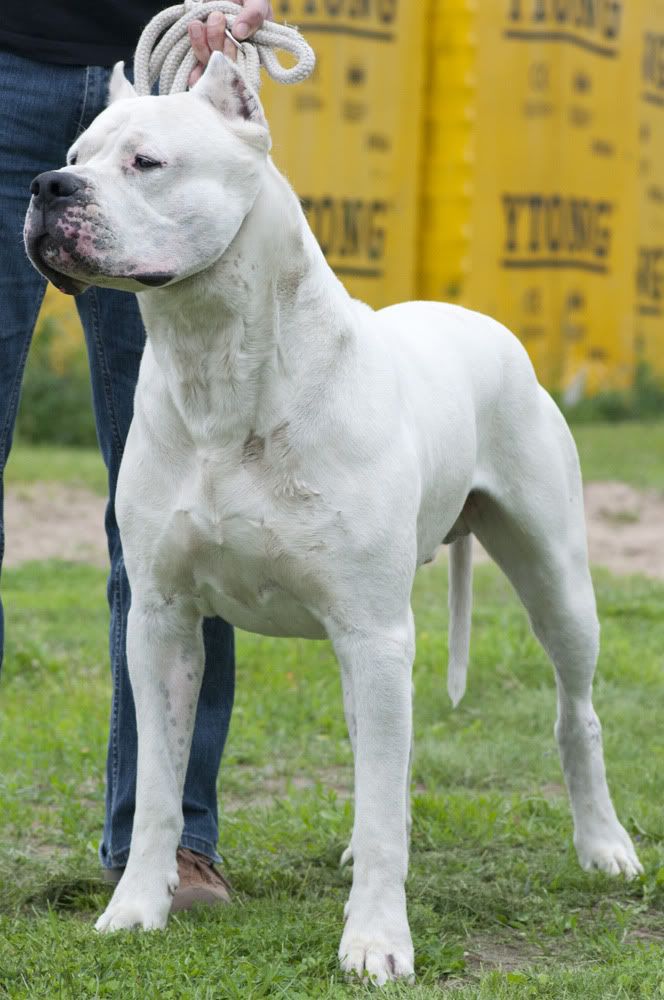
3. **Dogo Argentino**: With its striking sleek white coat and powerfully muscular frame, the Dogo Argentino is often superficially mistaken for a calm, gentle breed. However, a closer look at its origins reveals a dramatically different story. This magnificent dog was developed in Argentina specifically for hunting big game, including dangerous animals like wild boar and puma. Bred for extraordinary power, endurance, and courage, these very traits, while invaluable in the wild, can unfortunately become problematic in densely populated urban or suburban settings. Their strong prey drive and deeply ingrained territorial instincts often raise significant red flags for lawmakers and the public alike.
In 1928, a doctor named Nores Martinez bred the Dogo Argentino from the Cordoba fighting dog and other muscular breeds such as bulldogs and terriers. Initially, they were not intended to be bred in any way that would make them aggressive towards people. Despite this, there have been many recorded instances of Dogo Argentinos displaying aggression and violence towards humans, even to the extent of attacking and tragically killing their middle-aged owners. Their muscular and strong bodies have cemented their reputation as one of the most aggressive breeds in the world.
Because of their potential for aggression, these dogs have been unequivocally banned in countries such as the UK, New Zealand, Ukraine, and Denmark. Even within the United States, they face restrictions, being banned in particular states like Colorado, New York, and Michigan. Even in countries where they remain legal, Dogos often necessitate exceptionally strict handling, consistent and early training, and ongoing socialization to ensure they are well-adjusted and safe companions. Without such dedication, managing a Dogo Argentino can prove to be an overwhelming challenge.
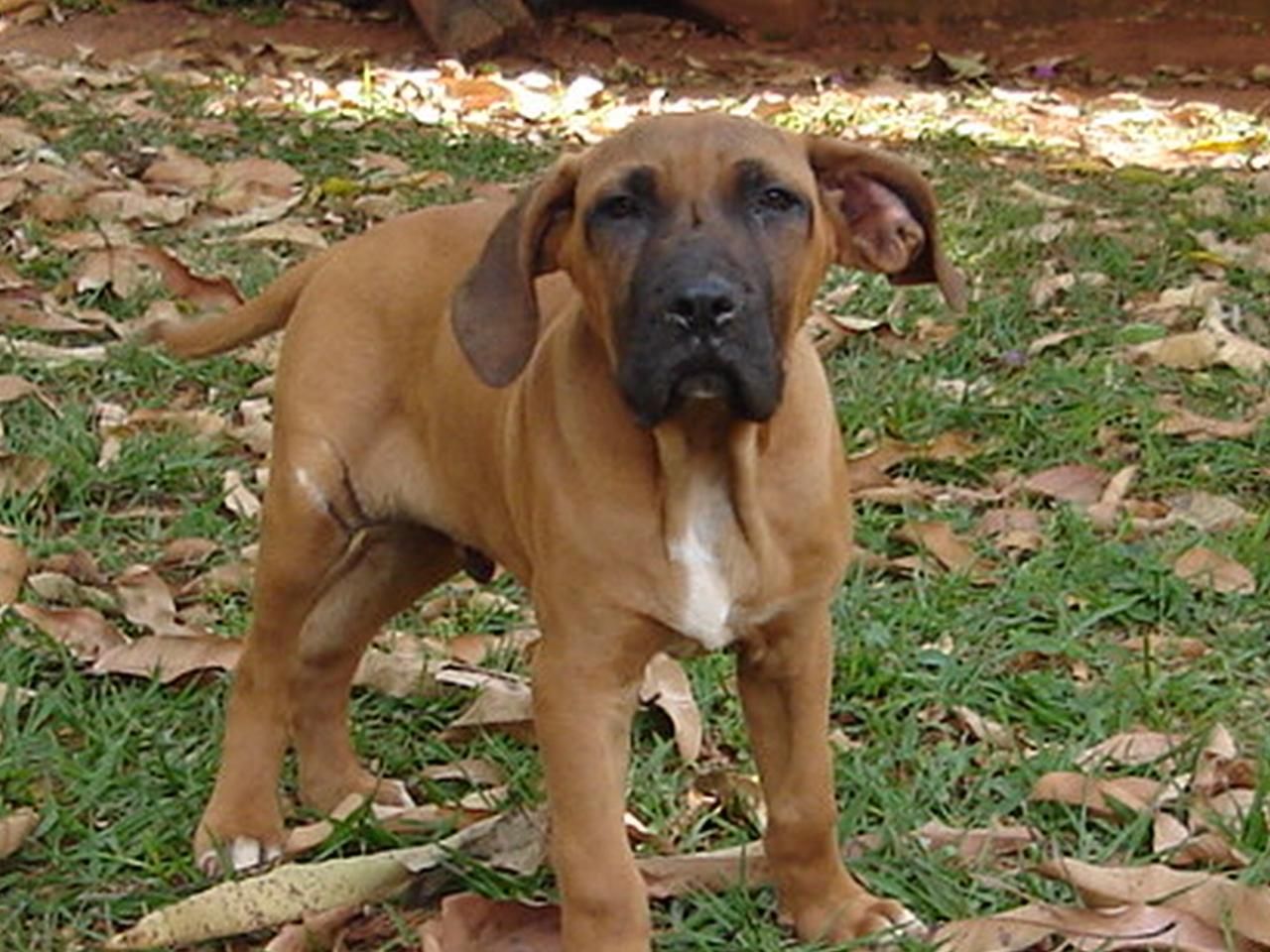
4. **Fila Brasileiro**: The Fila Brasileiro, also widely known as the Brazilian Mastiff, carries a formidable reputation for unwavering loyalty to its family, coupled with an extreme and often unpredictable suspicion of strangers. This powerful breed was originally developed in Brazil with a clear purpose: to protect livestock and vast properties. The Fila’s inherently bold temperament and pronounced territorial nature are precisely what have led to its classification as an illegal dog in places like the United Kingdom, Norway, and New Zealand. Their strong instinct to guard means they are known to act on their protective impulses with little hesitation, and it is this very unpredictability that raises significant concern for legislators and the general public.
Even highly experienced dog owners can find themselves struggling with the profound level of training, consistent structure, and dedicated socialization that this breed demands. The Fila Brasileiro is not a dog for the faint of heart or the casual owner; their intense instincts and considerable physical power require a firm, knowledgeable hand. This inherent difficulty in management, combined with their strong protective drive, is precisely why the Fila Brasileiro has landed on multiple international banned lists.
Their imposing presence and reputation for loyalty to their family make them excellent guardians, but the potential for misunderstanding or mismanaging their deeply ingrained protective behaviors has led many governments to err on the side of caution. This breed exemplifies the challenge of balancing a dog’s natural protective instincts with the need for public safety, resulting in widespread bans to prevent potential harm.
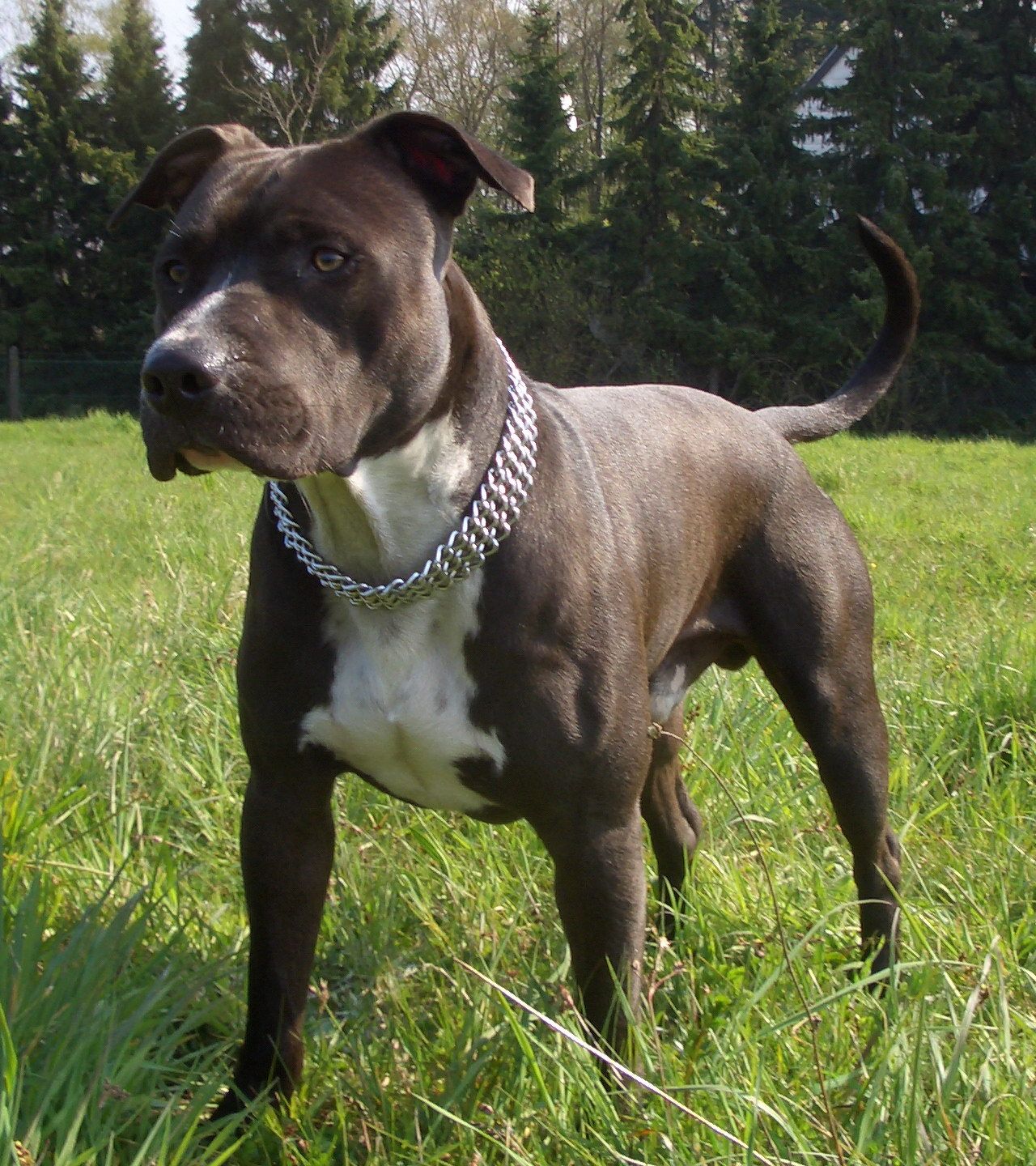
5. **American Staffordshire Terrier**: Frequently, the American Staffordshire Terrier, affectionately known as the “AmStaff,” finds itself erroneously lumped together with other ‘Pit Bull’ type breeds, and consequently, it faces similar legal challenges across the globe. Countries like Germany and certain parts of Australia have imposed strict regulations or outright bans on this breed. Despite their muscular build, alert demeanor, and profound devotion to their families, their physical resemblance to breeds historically utilized for dog fighting has unfortunately led to widespread mistrust and misunderstanding among the public and policymakers.
In far too many instances, legislation fails to draw a clear distinction between a true American Staffordshire Terrier and other so-called “bully breeds.” This lack of differentiation can transform ownership into a legal minefield for responsible individuals who cherish these dogs. While AmStaffs possess the capacity to be incredibly affectionate and exceptionally well-mannered companions when provided with proper training, consistent socialization, and experienced handling, public perception and breed-specific policies often fixate solely on their physical characteristics rather than their demonstrated behavior or individual temperament. Their heritage from the breeding of old English terriers and old English bulldogs imbued them with gameness, athleticism, and strength, traits that, while admirable, have also contributed to the challenges they face in gaining widespread acceptance.
Having journeyed through the stories of some of the most commonly restricted dog breeds, we now continue our fascinating exploration into the diverse world of canines that face significant international restrictions. These breeds, while often misunderstood, possess unique characteristics and histories that have unfortunately led to legislative action in various nations. We’ll delve into their specific traits, the circumstances that prompted these prohibitions, and the diverse regulations—from muzzling requirements to outright bans—imposed on their ownership worldwide. Get ready to uncover more intriguing tales of these remarkable, yet regulated, dogs.
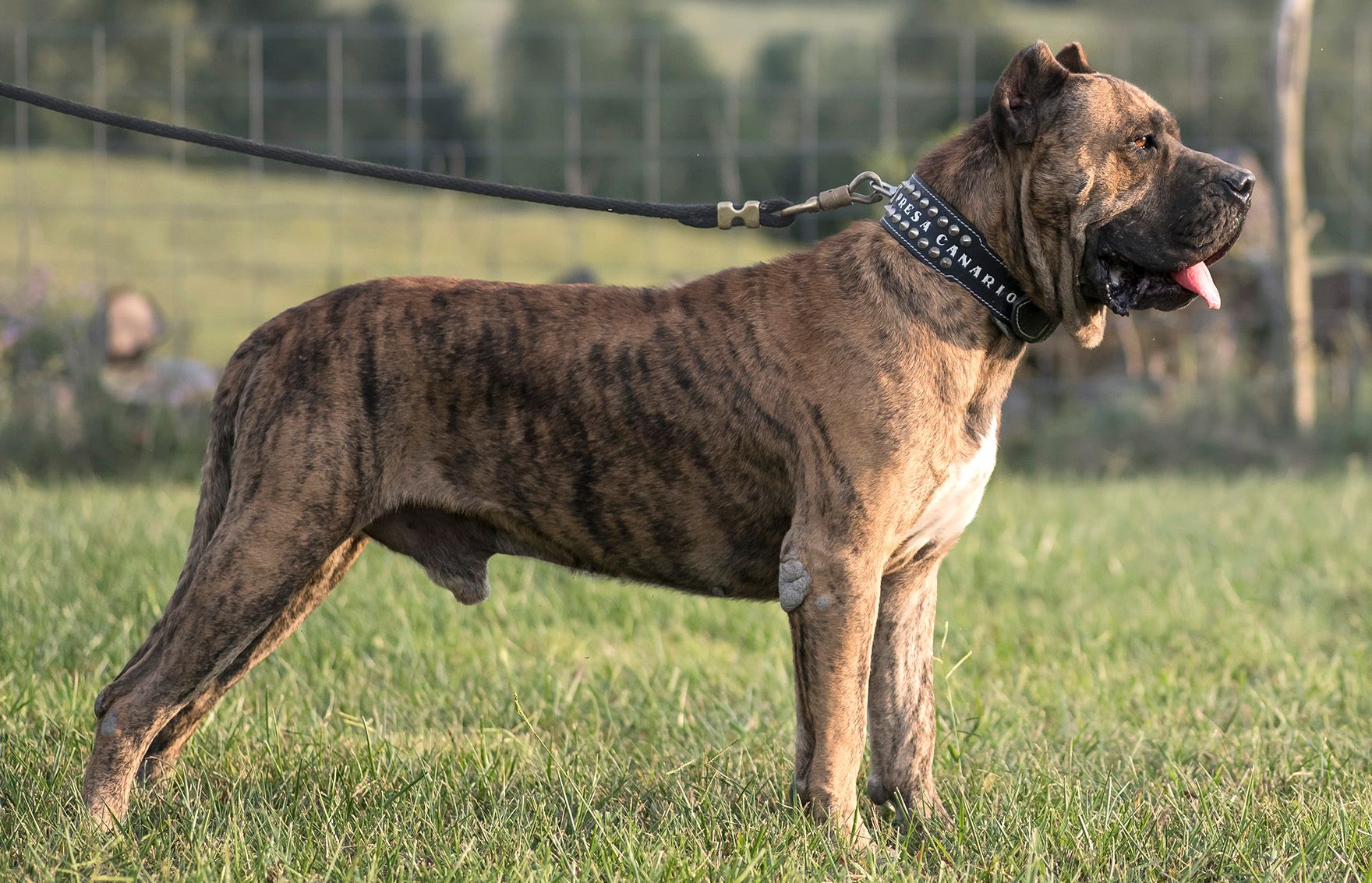
6. **Presa Canario**: Originating from the Canary Islands, the Presa Canario, sometimes known as ‘Dogo Canario,’ was primarily developed for working with livestock. These are exceptionally large, confident, and highly protective dogs, often reaching 60 to 66 centimeters in height. While they are renowned for their loyalty to their masters, they harbor an innate suspicion towards strangers, a trait that can manifest as unexpected and unpredictable attacks if not managed correctly. Their profound physical strength makes them incredibly difficult to control should they choose to assert themselves, an undeniable concern for public safety.
Indeed, the history of the Presa Canario includes several high-profile incidents where their powerful guarding instincts, combined with inadequate training or socialization, have led to serious harm. One such tragic event occurred in Ireland in 2017, when three of these dogs were involved in the killing of a woman. Such incidents have understandably prompted governments worldwide to take action, recognizing that while these dogs can be stable companions in the right environment, the potential risks associated with untrained or mismanaged individuals often outweigh the benefits in the eyes of the law.
Consequently, the Presa Canario faces bans or strict restrictions in a growing number of countries. Nations like the United Kingdom, New Zealand, Australia, Ukraine, and Singapore have imposed prohibitions on this breed. Even where they remain legal, owners are frequently required to adhere to stringent guidelines, emphasizing the global caution surrounding these powerful animals due to their ingrained protective drives and the potential for devastating outcomes when these traits are not properly channeled through consistent training and responsible ownership.
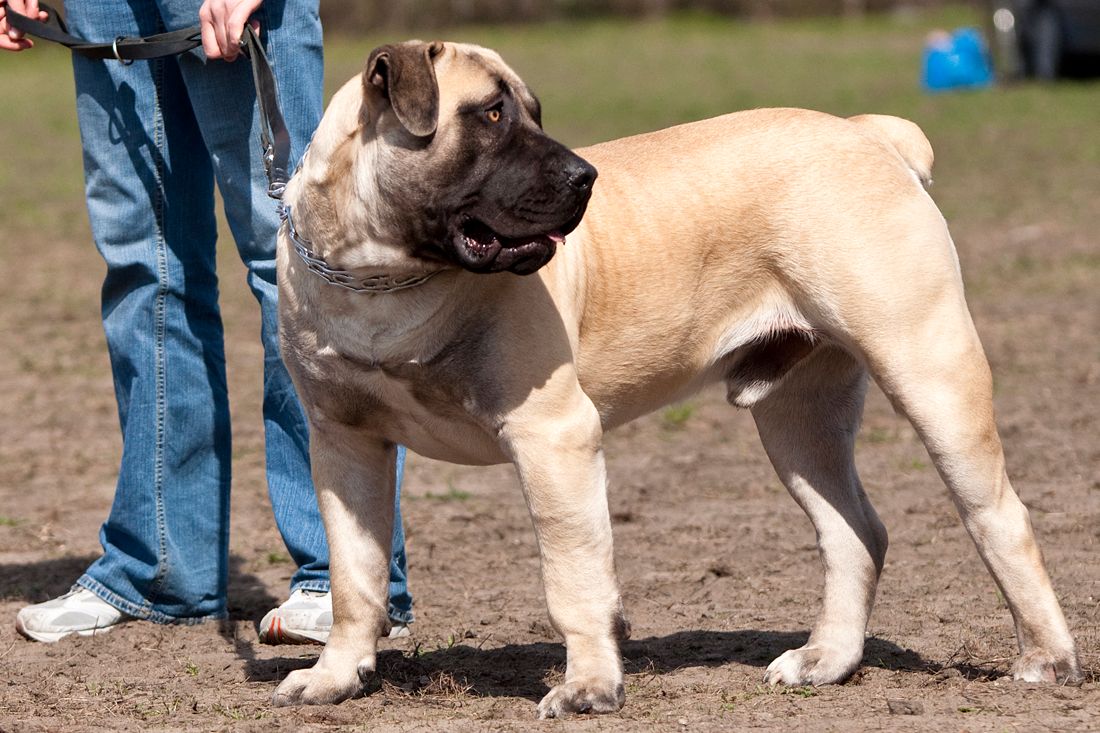
7. **Boerboel**: The Boerboel, a formidable breed with roots in South Africa, was meticulously developed for a very specific and demanding purpose: guarding farms against large predators. This is no ordinary guard dog; Boerboels are renowned for being confident, immensely territorial, and incredibly strong. Their sheer physical power and protective nature, while making them exceptionally good at their original job, demand a profound level of responsibility and expertise from their owners. Without clear structure, early training, and strong leadership, these dogs can quickly become reactive and remarkably challenging to manage in a domestic setting.
Concerns over the Boerboel’s potential for harm when not properly handled have led to their prohibition in various regions, including Denmark and other European nations. Beyond outright bans, countries like Romania have introduced restrictions on their possession and specifically prohibit the import of Boerboels. Similarly, Bermuda, Singapore, and Russia have also recognized the Boerboel as a dangerous or restricted breed, underscoring a global apprehension about their formidable capabilities.
Governments and legislative bodies often err on the side of caution with breeds of such immense power and protective instincts. The Boerboel exemplifies the careful balance between a dog’s inherent capabilities and the need for public safety. Their inclusion on banned lists in multiple countries reflects a collective decision that the risks associated with inexperienced ownership or insufficient training are too great to ignore, highlighting the critical importance of proper socialization and lifelong management for these powerful guardians.
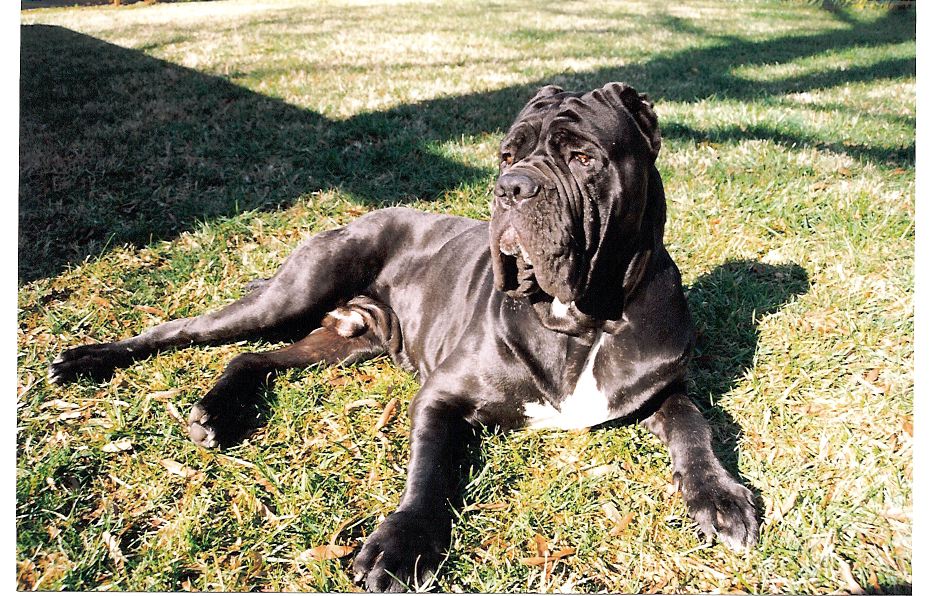
8. **Neapolitan Mastiff**: The Neapolitan Mastiff, an ancient Italian breed, is instantly recognizable by its enormous size, weighing up to 50 to 70 kilograms, and its signature loose skin and abundant wrinkles. Originally bred as guard dogs in the Roman Empire as far back as 700 BCE, where they served as war dogs, gladiators, and guardians, their instincts are deeply rooted in protecting territory and people. While they are often described as calm and watchful, their immense strength and protective drives can unfortunately lead to aggressive behavior if not properly understood or managed.
Despite their generally calm demeanor, the sheer mass and power of a fully grown Neapolitan Mastiff can pose a significant threat, especially around small children, even if the dog is not inherently aggressive. Untrained or psychologically unstable mastiffs can become profoundly threatening to their owners and the public. This potential for harm, stemming from their considerable size and the force they can exert, has prompted certain countries and regions to impose restrictions or bans.
For instance, Singapore and parts of Denmark have banned or restricted the Neapolitan Mastiff. Historically, Italy had included them on a list of restricted breeds in 2007, though this list was later cancelled in 2009. Other nations like Romania, the USA (under municipal laws), and Belarus continue to list them among dangerous breeds. In some places, individuals wishing to own a Neapolitan Mastiff may even be required to provide a psychological evaluation of the dog, highlighting the stringent requirements for responsible ownership of these imposing yet noble animals.
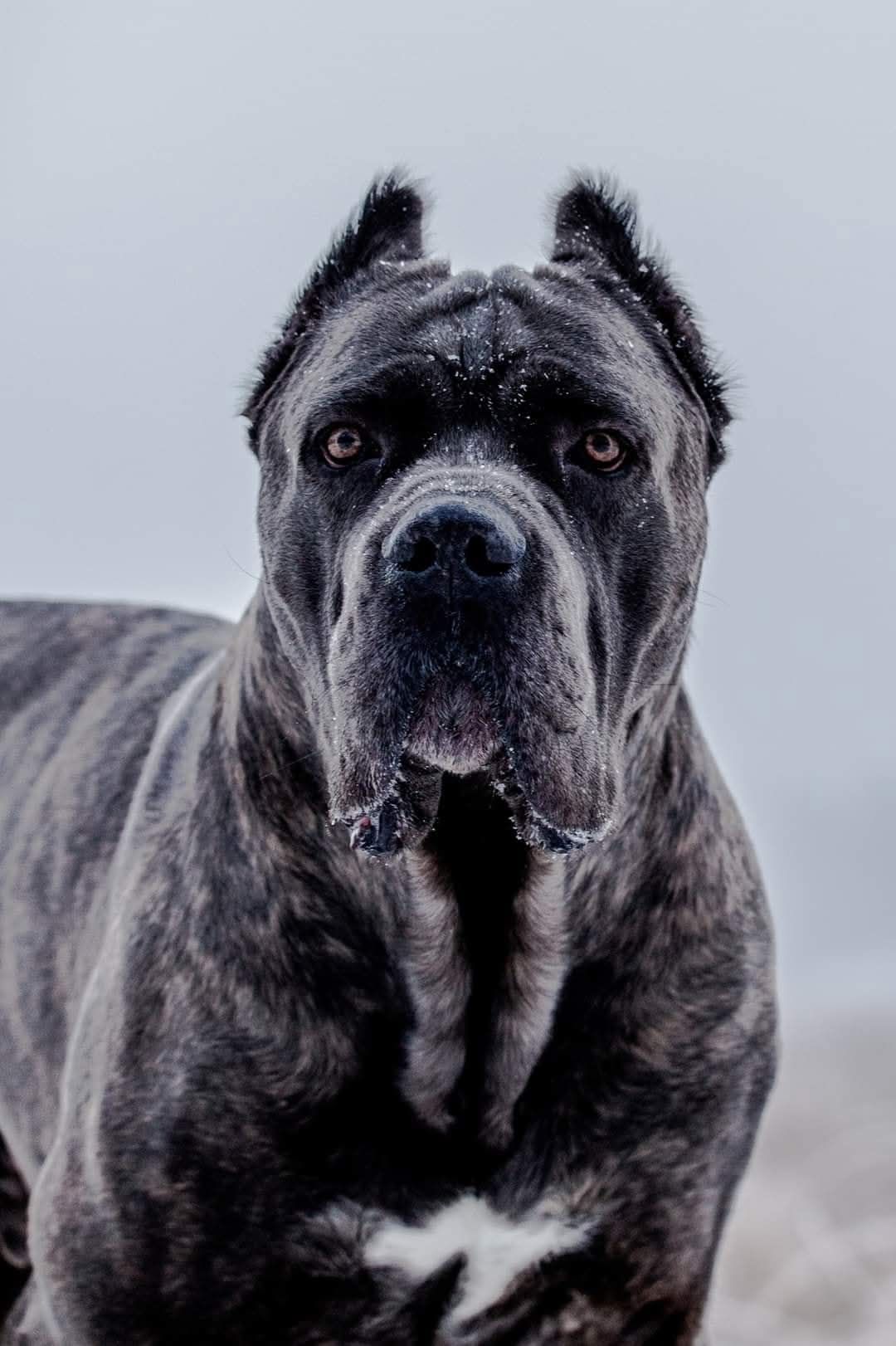
9. **Cane Corso**: Another powerful working dog originating from Italy, the Cane Corso was meticulously bred to guard property and livestock. These dogs are known for their intensity, impressive physical presence, and instinct to protect, traits that demand exceptionally responsible ownership. While a Cane Corso can be an incredibly loyal and well-behaved companion in the right home, their considerable size and deeply ingrained protective instincts can quickly become a liability without consistent, proper training and socialization from an early age.
The intimidating nature and the potential for serious incidents have led some countries and regions to impose bans or strict regulations on the Cane Corso. While there is no federal ban in the United States, numerous municipal authorities in various states have enacted laws prohibiting or restricting their ownership. Similarly, parts of Europe, along with countries like Bermuda, Ukraine, and Belarus, have implemented restrictions due to past incidents and the breed’s formidable characteristics.
Responsible ownership for a Cane Corso goes far beyond basic obedience; it involves a deep understanding of the breed’s working heritage and a commitment to providing strong leadership and continuous socialization. Without such dedication, managing a Cane Corso can prove to be an overwhelming challenge, reinforcing why many legislative bodies have deemed it necessary to regulate this magnificent yet demanding breed for the sake of public safety.
Read more about: Is Your Perfect Pet (or Thanksgiving Dish) Written in the Stars? Find Out Based on Your Zodiac Sign

10. **Wolfdog**: The wolfdog represents a unique and often controversial canine: a hybrid resulting from the breeding of a domestic dog and a wolf. While the concept of owning such an exotic animal might pique curiosity, these animals often retain significant wild instincts that pose serious behavioral challenges. Unlike traditional domestic dogs, wolfdogs can exhibit unpredictable reactions, a pronounced prey drive, and a genuine difficulty in bonding with humans in the same way as their fully domesticated counterparts. These inherent wild traits make them a remarkably impractical and frequently unsafe choice for the average dog owner.
The unique challenges associated with wolfdogs have led to widespread prohibitions and severe restrictions across the globe. Norway, for instance, has outright banned these hybrids. In the United States, numerous states have either heavily restricted or entirely prohibited their ownership. Finland also includes ‘wolfdogs’ among its dangerous breeds, with specific exceptions for breeds like the Czech Wolfdog and the Saarloos Wolfhond, which have been more selectively bred for domesticity.
Furthermore, Switzerland specifically bans the Czechoslovakian Wolfdog, and various jurisdictions in the USA include ‘mixtures of wolves’ in their banned lists. The rigorous training required for a wolfdog demands a highly specialized understanding of both canine and wild animal behavior, far exceeding the experience level of most dog owners. The prevailing legislative stance worldwide reflects a cautious approach to public safety, recognizing that the unpredictable nature of Wolfdogs often outweighs the allure of their wild heritage.
Our journey through the landscape of global dog bans reveals a complex interplay between breed heritage, individual temperament, and public safety. While these magnificent animals possess innate qualities that make them exceptional in certain roles, their immense power and protective instincts, when unmanaged or misunderstood, can lead to serious concerns. The regulations and prohibitions we’ve explored are not a judgment on the dogs themselves, but rather a reflection of societal efforts to mitigate potential risks and ensure harmony between humans and our canine companions. Responsible ownership, early socialization, and continuous training remain paramount for any dog, and especially for those breeds whose very nature demands a knowledgeable and dedicated hand.



